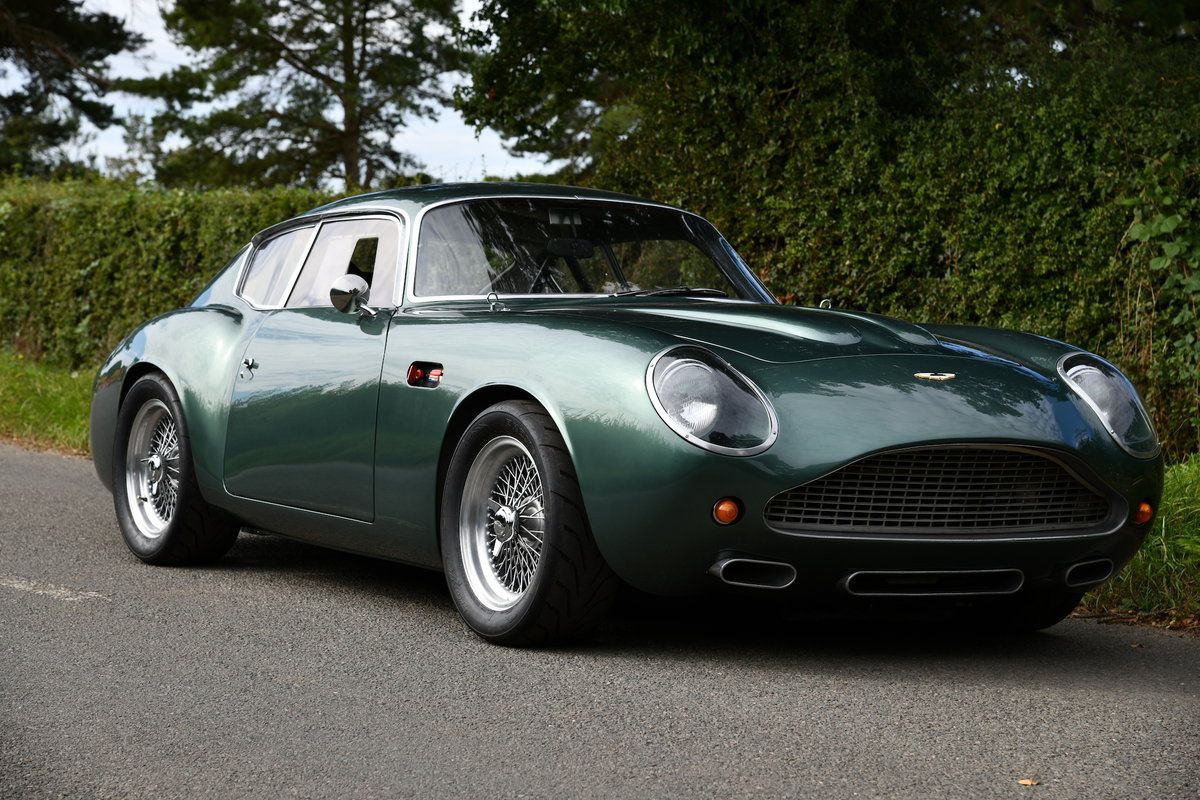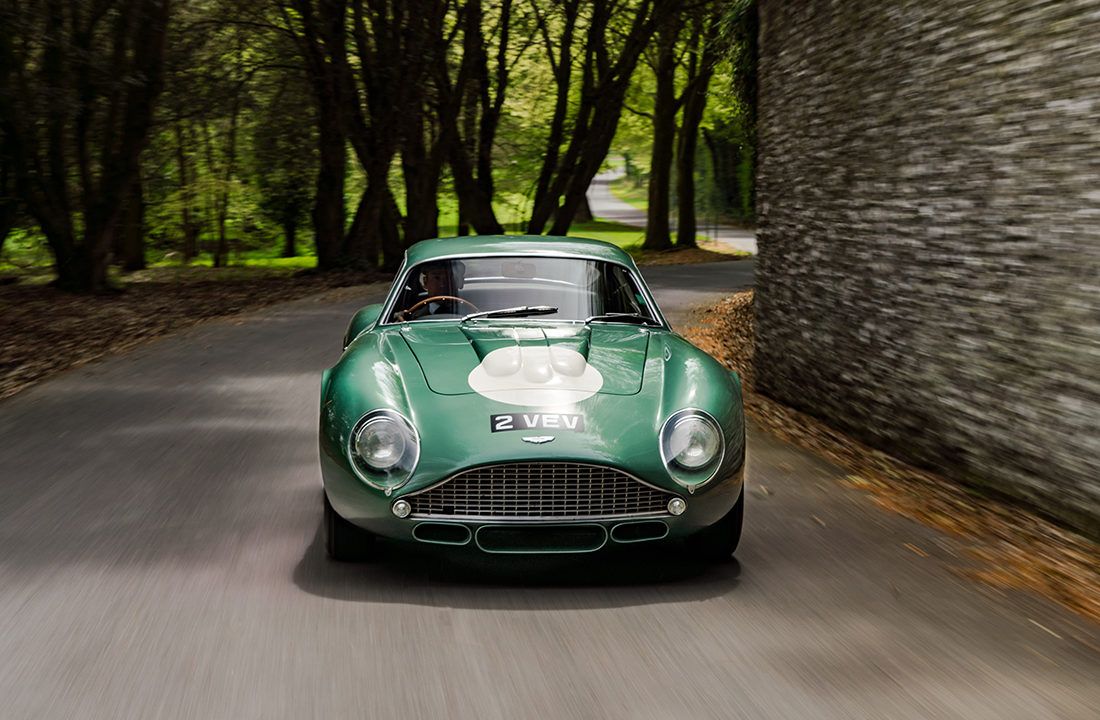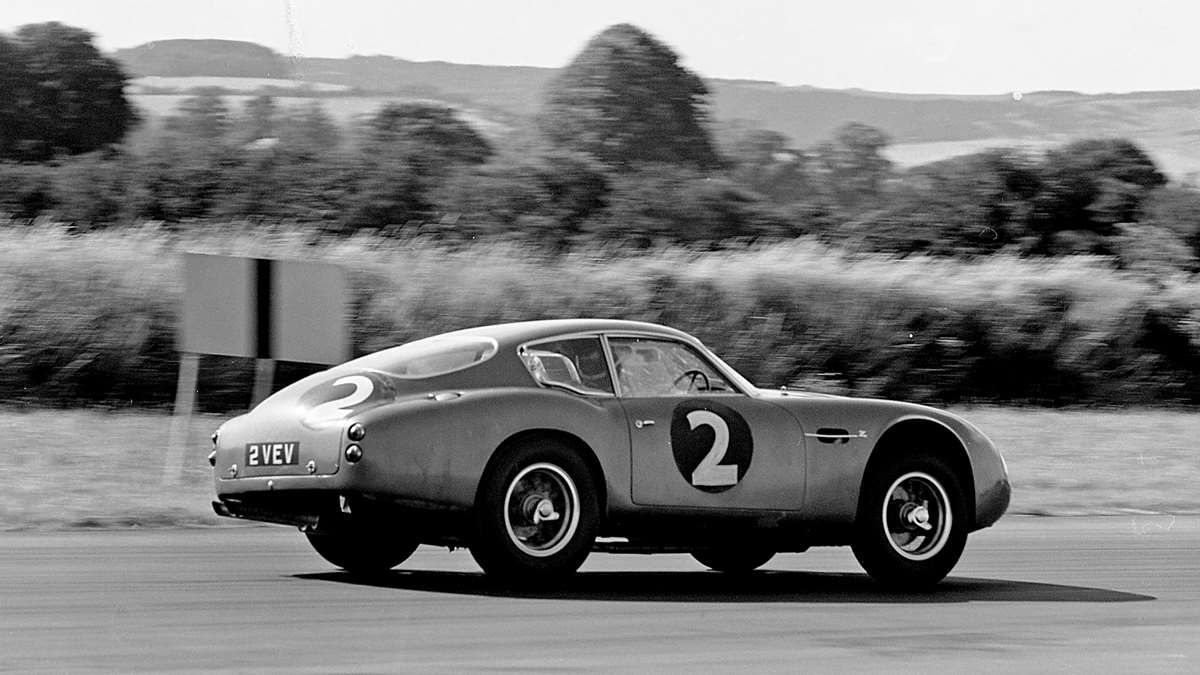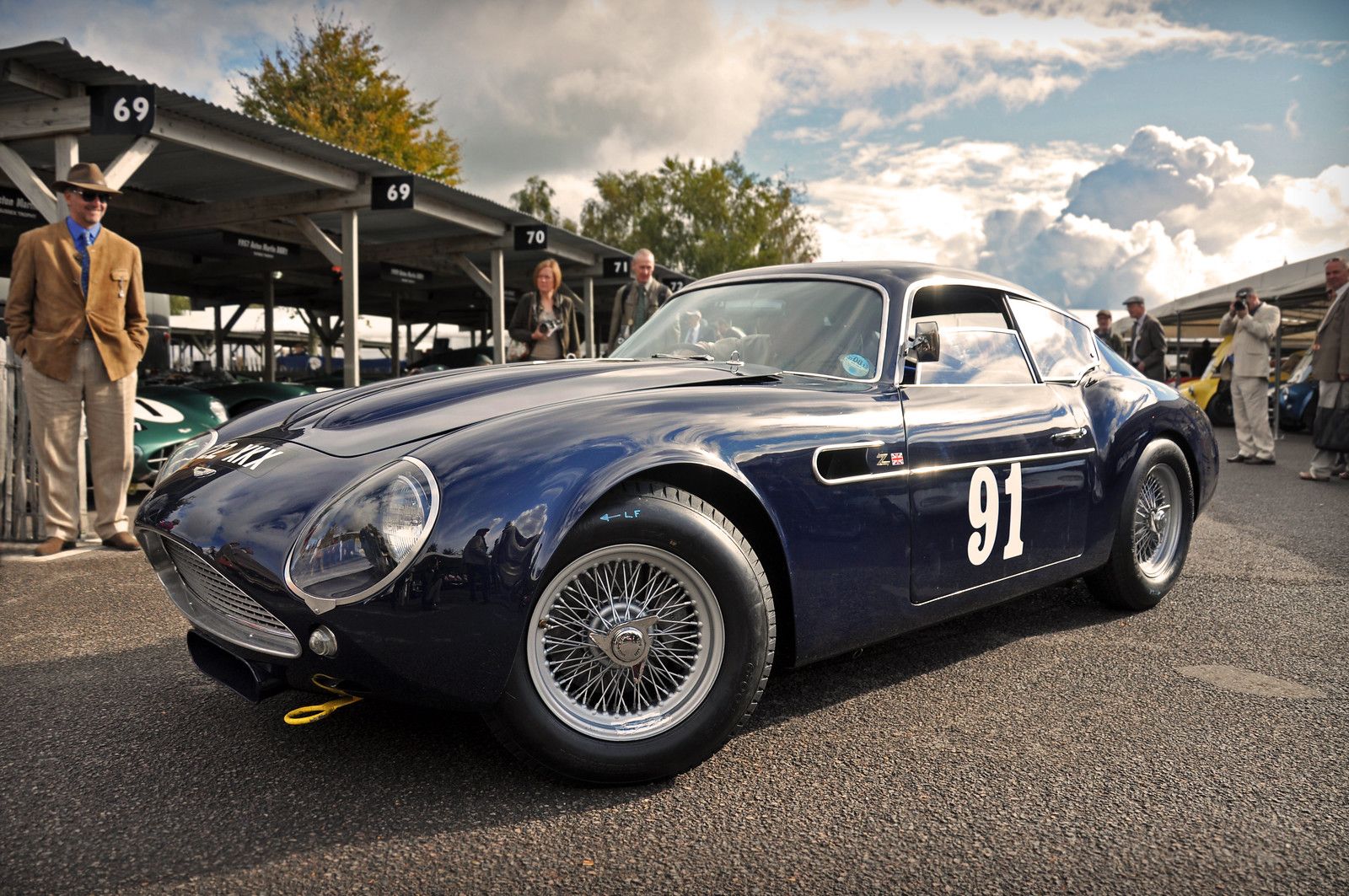The DB4 GT Zagato was born in late 1960 from Aston Martin's four-seater grand tourer. It was a lightweight version of the already lightened DB4 GT, clothed in beautiful bodywork built by Carrozzeria Zagato of Milan. The design of which was by newly qualified 23-year-old Ercole Spada, who had joined Zagato as an apprentice in early 1960. Both the DB4 GT and the DB4 GT Zagato are two of the most valuable and collectible cars in Aston Martin's history with both models fetching over $1,000,000 at auctions, and the latter much more. A production run of 25 Zagato's was planned but only 19 were initially built, making this an exceedingly rare car.
Although a road car, the Zagato's were built to go racing and four cars were further lightened to a specification especially for this purpose. These cars had a lower roofline, larger rear fenders, a reshaped tail, and a longer, flatter front end. The most prominent of these lighter spec cars, known by the registration plates they share, 1 VEV and 2 VEV were raced under John Ogier's Essex Racing Stable and raced at the 24 Hours of Le Mans in 1961. The 2 VEV car sold in 2018 for £10,081,500, making it the most expensive British classic to be sold at auction.
An Already Stunning Car, The DB4 GT Was Transformed By Zagato Into Something Achingly Beautiful and Brutish.
There's no denying the brutish handsomeness of the DB4 Zagato. The enclosed headlights, muscular rear fenders, and bulging bonnet, it is devoid of the sharp lines of the DB4 GT and for good reason, it means it's quicker around a track. The DB4 GT although a very pretty car as well, is more of a stately gentleman with a sharp suit and a Doberman by his side. Whereas the Zagato is a heavyweight contender shaped by his violent environment, ready to strike at any moment. And thanks to changes under the bonnet, it could. The 3.7-liter straight-six was given a higher compression ratio and produced a claimed 314 HP. Coupled with the ultralight alloy bodywork, (which was said to be so thin you couldn't lean on the car for fear of misshaping it) the car could hit 60 MPH from a standstill in just north of 6 seconds.
When the Zagato's were new they cost £5,170, roughly $142,000 in today's currency. Back in the '60s, if you wanted to do some serious top-tier racing you had to get into a Ferrari 250 GT SWB or later a 250 GTO, and you'd have needed deep pockets as a 250 GTO, brand new, would have cost over $150,000 today. The Zagato, although not much cheaper, provided a competitive platform to challenge the 12 cylinder prancing horses. However, a Jaguar E-Type Lightweight was about half the price of an Aston and just as quick. Despite the price tag the Zagato's didn't have much racing success, even with racing legends Jim Clark and Stirling Moss at the wheel. Jim Clark actually crashed spectacularly into John Surtees's GTO at Goodwood in 1962, taking him out of the race. The popularity of the DB4 at the time was low. Aston ended up selling the last few Zagato's for a discounted price after they had been in stock for several years.
With A Disappointing Racing Pedigree, Why Are They Worth So Much?
This isn't so much a question of the higher the price the more desirable. Nor is it a question of racing pedigree immortalizing a car. It could easily be argued that every GT car that competed in the early '60s was a design icon, from the long elegant E-Type Jaguars to the missile-like Shelby Daytonas, it really would be very hard to pick between some of the cars that raced at the time. But, the Zagato is a bit more special. It was Aston's first collaboration with the Italian company and one that has continued long into their production of beautiful machines.
Aston wanted to build on their racing success from Le Mans 1959 when the DBR1/300 took the top two places. Unfortunately, the DB4 couldn't translate this on the track. Was the competition from Maranello too tough? Or was it the small numbers in which the DB4's raced? Ultimately it was the underdevelopment of the Zagato for racing that probably let it down. It was primarily a road car used for racing, whereas the Ferrari 250's were race cars for the road.
What makes the DB4 GT Zagato a timeless masterpiece is a number of things. The fact that you can still see them race at full tilt at Goodwood Revival is very special. The marrying of (at the time) world-leading British engineering and seminal Italian design flair. However, chiefly it's the design that is masterful. It genuinely is one of the best-looking cars ever made and what makes that even more special is that it was from the mind of a 23-year-old who would go on to design some of the '60s prettiest cars. But, the Zagato was his swan song.




